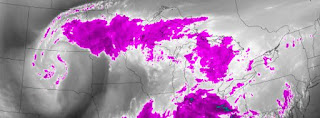There should be dozens of these beautiful, insect eating marvels gracing the evening sky ... grazing on a feast of bugs. I had only seen a single nighthawk the last two evenings before recording this sunset painting. On previous years at Singleton, there would be maybe a dozen or two nighthawks feeding. I am saddened but when there is one, I guess that there is still hope. When will humans learn? I did some research and happily discovered that some Canadians are trying to make a difference.

A new 2021 study by University of Alberta biologists has created a comprehensive picture of the 10,000-kilometre migratory route of common nighthawks using GPS data. The study is the first step in analyzing where and why the birds’ population numbers are declining.“Like many migratory bird species, common nighthawks are declining, but the rate of those declines varies across North America,” said Elly Knight, lead author and PhD student in the Department of Biological Sciences. “Figuring out what causes those declines can be difficult and complicated for migratory species like the nighthawk because they occupy so many different places during the year.”
Common nighthawks breed in North America but migrate in the fall up to 10,000 kilometres south to the Amazon and Cerrado biomes of South America. The birds make numerous stops along their journey, and GPS tracking allows biologists to understand where and when they’re spending their time outside of their breeding areas.
The common nighthawk is one of the most widely distributed birds in the Western Hemisphere, but also one of the most poorly understood due to its nocturnal nature. It is not a hawk at all, but a member of the "nightjar" family which is a group of nocturnal birds that "hawk" to catch and eat flying insects. It is well disguised during the day by plumage that camouflages with the ground or tree branch it roosts on. At dusk, it uses long wings, huge eyes and a giant mouth to pursue and capture its prey. I built shelters to try to encourage these birds to nest at Singleton.
As I came in from watching this sunset sky, a bat buzzed my head. I smiled. We have bat houses up at Singleton just like at Watershed Farm on the Oak Ridges Moraine. It was good to see some bats again.
As for the weather, the southwesterly upper winds and gravity waves shaped the large patch of altostratus. Pulses of energy occur in regular wavelengths and enhance the cloud along the deformation zone.
If you should Google "Nighthawk", you are more likely to see the 1942 painting by Edward Hopper - not he one with Elvis and crew. For this and much more art, click on Pixels. Thank you.





































